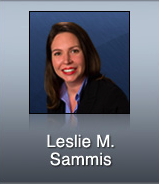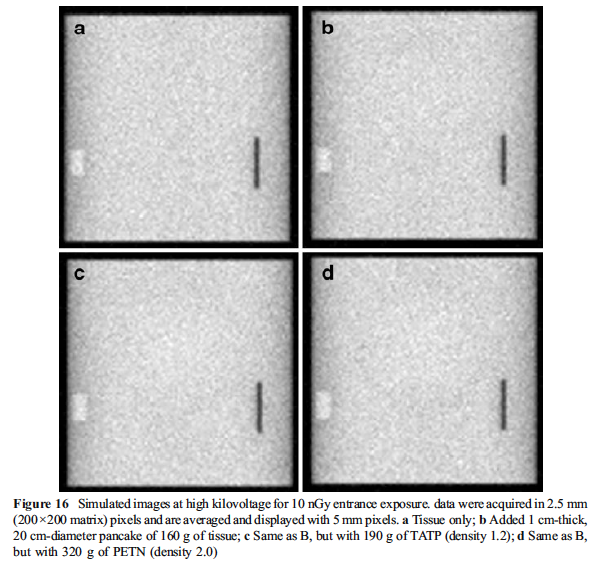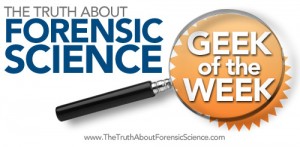The Forensic Science Geek of the Week
Please visit the www.TheTruthAboutForensicScience.com FaceBook fan page.
The week 48 “www.TheTruthAboutForensicScience.com Forensic Science Geek of the Week” honors goes to: Leslie M. Sammis, Esquire

According to her website:
Leslie M. Sammis defends individuals charged with misdemeanor and felony criminal offenses in the State of Florida. She is admitted to practice law in the State of Florida, the State of Georgia, the United States District Court for the Middle District of Florida, and the Eleventh Circuit United States Court of Appeals.
With over 10 years of experience as a criminal defense attorney, Leslie Sammis graduated from the University of Florida College of Law with Honors in 1999. She has devoted her entire career to defending individuals charged with criminal offenses.
After graduating from the University of Oklahoma in 1996, Leslie Sammis completed her first year of law school at Stetson University College of Law in St. Petersburg, Florida. At Stetson University College of Law, Ms. Sammis competed as the only first year student on Stetson’s Trial Team winning second place overall in the 1997 National Association of Trial Lawyers (ATLA) Competition in Denver.
For her second and third year of law school, Ms. Sammis transferred to the University of Florida College of Law in Gainesville, Florida, where she graduated with Honors in 1999. While at the University of Florida, Ms. Sammis served on the Executive Board for the UF Justice Campbell Thornal Moot Court Board and competed in several moot court competitions.
Gaining valuable insight into the criminal justice process, Ms. Sammis completed internships with the State Attorney’s Office prosecuting felony offenses including three felony jury trials, the United States Attorney’s Office in Tampa assisting federal prosecutors, and a federal judicial internship with the Honorable Henry Lee Adams, Jr., United States District Judge, for the Middle District of Florida, Tampa Division.
Ms. Sammis’ passion for trial advocacy lead her to the Public Defender’s Office for the Fourth Judicial Circuit of Florida where she gained valuable jury trial experience while representing individuals in misdemeanor, juvenile and felony divisions.
After entering private practice in 2001, Ms. Sammis continued to focus exclusively on criminal and DUI defense before founding the Sammis Law Firm, P.A. Ms. Sammis provides aggressive and experienced legal representation to each of her clients charged with criminal offenses in Florida. She takes a scholarly approach to legal research using the most cutting edge resources available to stay current on recent changes in the law.
Ms. Sammis believes that trial preparation begins on day one by investigating the case, and then methodically attacking the prosecutor’s evidence through motions to suppress, motions to exclude and motions to dismiss. Ms. Sammis believes in utilizing the top experts available including forensic accountants, toxicologists, and private investigators. The best pre-trial negotiations take place when the prosecutor understands that both the client and the attorney are willing and able to take the case to trial to obtain a “not guilty” verdict.
Congratulations to our Forensic Science Geek of the Week winner!
See the challenge question that our winner correctly answered.
OFFICIAL QUESTION:
-

- Forensic Science Geek of the Week Challenge
1. What sort of device is this?(that should be easy)
2. What principle is it based upon?
3. How does it work?
4. What are the limitations of this assay?
Our Geek of the Week answered:
1. What sort of device is this?(that should be easy)
Rapiscan Systems’ Rapiscan Secure 1000 Single Pose
As its name implies, this scanner generates full-body front and back images as a passenger stands still. It’s designed to detect small objects, such as liquids, explosives, and weapons concealed on a passenger. The system costs $200,000.
2. What principle is it based upon?
The scanner technology is based on the X-ray compton scattering effect of X-rays, a form of ionizing radiation.
3. How does it work?
Unlike a traditional X-ray machine which relies on the transmission of X-rays through the object, X-ray detects the radiation that reflects from the object and forms an image. The pattern is dependent on the material property, and is good for imaging organic material.
4. What are the limitations of this assay?
Many software implementations of the scan have been designed to distort private areas which raises concerns that this blurring may allow people to carry weapons or certain explosives aboard by attaching the object or substance to their genitals.
The International Atomic Energy Agency and Nuclear Energy Agency recommend against using ionizing radiation on certain populations like pregnant women and children. No long-term studies have been done on the health effects of these types of scanners.
[BLOGGER’S NOTE: Here is our Honorable Mention:
Ron Moore, Esquire had a rather funny reply that is worth the read.
Just to amplify an otherwise acceptable answer….
Here is a graphical representation of the technology.

Source of the photo and further information can be found here: http://arstechnica.com/science/news/2010/12/the-physics-and-biology-of-the-tsas-backscatter-security-scanners.ars
My comments:
I realize that some folks may see this post and the publications of the limitations of this technology as some sort of threat to our security at the airport. Well it isn’t. The limitations of this technology has been publicized in 2010. In fact, more publication on the limitations of this technology might actually provide for greater security. As in most things in life, we depend too much on one given method. We should use more of an orthogonal approach.
Now there are some pretty significant limitations to this technology. According to Journal of Transportation Security Volume 4, Number 1, 73-94, DOI: 10.1007/s12198-010-0059-7 “An evaluation of airport x-ray backscatter units based on image characteristics” by Leon Kaufman and Joseph W. Carlson.

That is, flatten or “pancake” the material round, and taper the edge smooth instead of being “all edge” like the brick. The material will then blend in with the skin tissue and will be nearly impossible to discern.Even more simply orient the object you are trying to hide in a manner shown in Figure 18 below.
“Because front and back views are obtained, low Z materials can only be reliable detected if they are packed outside the sides of the body or with hard edges, while high Z materials are well seen when placed in front or back of the body, but not to the sides. Even if exposure were to be increased significantly, normal anatomy would make a dangerous amount of plastic explosive with tapered edges difficult if not impossible to detect.”
Figure 18 shows a widely-distributed backscatter image. On the left is a complete view of her torso, on the right, a section has been blacked out. While the breasts are easily recognized at right, without some prior knowledge of the subject, it would be hard to distinguish the increase of intensity in the superior part of her breasts from the natural gradients of the image.
It is very likely that a large (15–20 cm in diameter), irregularly-shaped, cm-thick pancake with beveled edges, taped to the abdomen, would be invisible to this technology, ironically, because of its large volume, since it is easily confused with normal anatomy. Thus, a third of a kilo of PETN, easily picked up in a competent patdown, would be missed by backscatter “high technology”. Forty grams of PETN, a purportedly dangerous amount, would fit in a 1.25 mm-thick pancake of the dimensions simulated here and be virtually invisible. Packed in a compact mode, say, a 1 cm×4 cm×5 cm brick, it would be detected.
The images are very sensitive to the presence of large pieces of high Z material, e.g., iron, but unless the spatial resolution is good, thin wires will be missed because of partial volume effects. It is also easy to see that an object such as a wire or a boxcutter blade, taped to the side of the body, or even a small gun in the same location, will be invisible. While there are technical means to mildly increase the conspicuity of a thick object in air, they are ineffective for thin objects such as blades when they are aligned close to the beam direction.
]
The Hall of Fame for the www.TheTruthAboutForensicScience.com Forensic Science Geek of the Week:
Week 1: Chuck Ramsay, Esquire
Week 2: Rick McIndoe, PhD
Week 3: Christine Funk, Esquire
Week 4: Stephen Daniels
Week 5: Stephen Daniels
Week 6: Richard Middlebrook, Esquire
Week 7: Christine Funk, Esquire
Week 8: Ron Moore, B.S., J.D.
Week 9: Ron Moore, B.S., J.D.
Week 10: Kelly Case, Esquire and Michael Dye, Esquire
Week 11: Brian Manchester, Esquire
Week 12: Ron Moore, B.S., J.D.
Week 13: Ron Moore, B.S., J.D.
Week 14: Josh Lee, Esquire
Week 15: Joshua Dale, Esquire and Steven W. Hernandez, Esquire
Week 16: Christine Funk, Esquire
Week 17: Joshua Dale, Esquire
Week 18: Glen Neeley, Esquire
Week 19: Amanda Bynum, Esquire
Week 20: Josh Lee, Esquire
Week 21: Glen Neeley, Esquire
Week 22: Stephen Daniels
Week 23: Ron Moore, B.S., J.D.
Week 24: Bobby Spinks
Week 25: Jon Woolsey, Esquire
Week 26: Mehul B. Anjaria
Week 27: Richard Middlebrook, Esquire
Week 28: Ron Moore, Esquire
Week 29: Ron Moore, Esquire
Week 30: C. Jeffrey Sifers, Esquire
Week 31: Ron Moore, Esquire
Week 32: Mehul B. Anjaria
Week 33: Andy Johnston
Week 34: Ralph R. Ristenbatt, III
Week 35: Brian Manchester, Esquire
Week 36: Ron Moore, Esquire
WEEK 37: UNCLAIMED, IT COULD BE YOU!
Week 38: Pam King, Esquire
Week 39: Josh Lee, Esquire
Week 40: Robert Lantz, Ph.D.
WEEK 41: UNCLAIMED, IT COULD BE YOU!
Week 42: Steven W. Hernandez, Esquire
Week 43: Ron Moore, Esquire
Week 44: Mehul B. Anjaria
Week 45: Mehul B. Anjaria
Week 46: Ron Moore, Esquire
Week 47: Ron Moore, Esquire
Week 48: Leslie M. Sammis, Esquire



